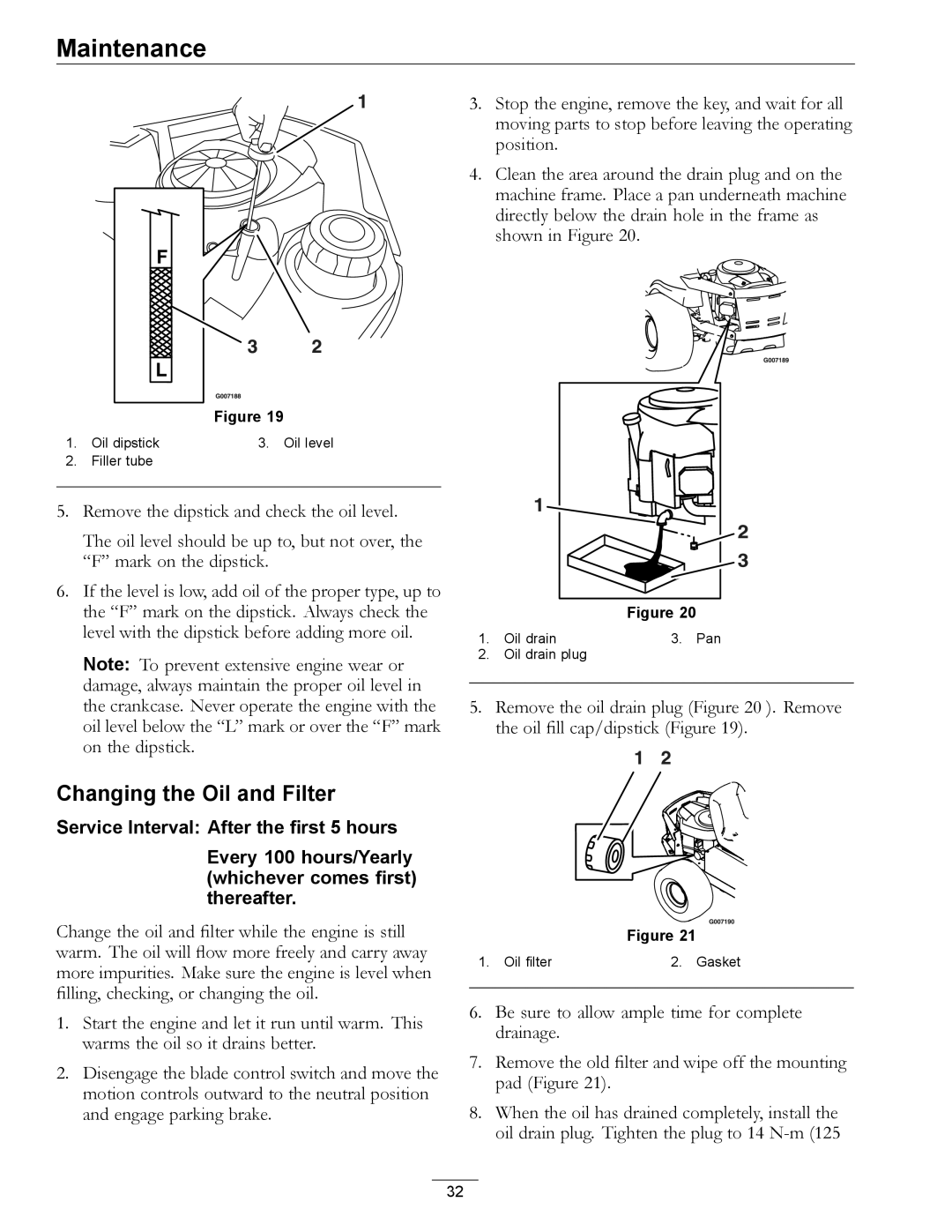
Maintenance
3. Stop the engine, remove the key, and wait for all moving parts to stop before leaving the operating position.
4. Clean the area around the drain plug and on the machine frame. Place a pan underneath machine directly below the drain hole in the frame as shown in Figure 20.
Figure 19
1. Oil dipstick | 3. Oil level |
2.Filler tube
5.Remove the dipstick and check the oil level.
The oil level should be up to, but not over, the “F” mark on the dipstick.
6.If the level is low, add oil of the proper type, up to the “F” mark on the dipstick. Always check the level with the dipstick before adding more oil.
Note: To prevent extensive engine wear or damage, always maintain the proper oil level in the crankcase. Never operate the engine with the oil level below the “L” mark or over the “F” mark on the dipstick.
Figure 20
1. Oil drain | 3. Pan |
2.Oil drain plug
5.Remove the oil drain plug (Figure 20 ). Remove the oil fill cap/dipstick (Figure 19).
Changing the Oil and Filter
Service Interval: After the first 5 hours
Every 100 hours/Yearly (whichever comes first) thereafter.
Change the oil and filter while the engine is still warm. The oil will flow more freely and carry away more impurities. Make sure the engine is level when filling, checking, or changing the oil.
1.Start the engine and let it run until warm. This warms the oil so it drains better.
2.Disengage the blade control switch and move the motion controls outward to the neutral position and engage parking brake.
Figure 21
1. Oil filter | 2. Gasket |
6.Be sure to allow ample time for complete drainage.
7.Remove the old filter and wipe off the mounting pad (Figure 21).
8.When the oil has drained completely, install the oil drain plug. Tighten the plug to 14
32
